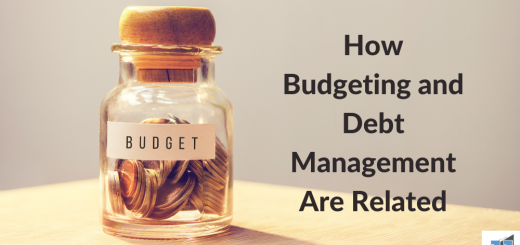Everything You Need To Know About Sinking Funds
Sinking funds are a useful tool that help you prepare for the big expenses that life throws your way.
Instead of scrambling to cover predictable costs that you incur throughout the year, a sinking fund can help you cover the expense without tapping into your emergency savings.
Let’s take a closer look at what a sinking fund is and how you can use this savings strategy.
What Are Sinking Funds?
Sinking funds are savings that are designated to be used for a particular purchase. You might use sinking funds to cover a large one-time expense or pay for a bill that only comes around once or twice a year.
Essentially, you can choose an amount you’d like to save for a particular goal. From there, you can set aside money each month to build your sinking fund.
For example, you might save $100 each month in a sinking fund to cover your $1,200 annual car insurance bill. Or you may choose to save $500 each month in a sinking fund to save for the down payment on your first home.
How Is a Sinking Fund Different From an Emergency Fund?
Everyone encounters a big expense that they knew was coming but takes their budget by surprise.
Although it can feel unexpected, a predetermined expense is not truly an emergency. As a result, it doesn’t make sense to tap into your emergency fund if you can use a sinking fund instead.
A great example of this is the holiday season. It happens every year, but many of us are still unprepared for the cost. You might have the added expense of throwing a party, buying presents, or hosting a large holiday meal.
Instead of tapping into your emergency fund, you may want to consider setting up a sinking fund. That way, when the holidays roll around, you’ll be ready for the expense without using your emergency fund.
Why Are Sinking Funds Important?
Sinking funds are an important personal finance tool because they allow you to save for anything you want.
Take a minute to think back over the past year. Did you encounter any large expenses that threw your budget for a loop? Consider whether or not any of those expenses could have been prepared for with a sinking fund.
An annual car insurance bill is a perfect expense for a sinking fund. You can save a predetermined amount each month to cover the bill when it comes around.
However, you don’t have to use sinking funds solely for regular expenses such as your auto insurance. You can also use sinking funds to build savings over time towards a big goal.
For example, you may set up a sinking fund to cover your next car purchase or build up enough savings for the vacation you’ve been wanting to take.
When you choose to use a sinking fund, the money is set aside for a particular purpose. Consequently, this strategy can help you avoid dipping into your emergency savings.
More importantly, a sinking fund can help you avoid taking on debt for your planned expenses. This is critical to ensuring your financial wellness.
Related: Overwhelmed by debt? 8 ways to reclaim your finances
What Kinds of Sinking Funds Can You Have?
Depending on how much money you can realistically save, you can have as many sinking funds as you want. That said, you’ll have to decide which expenses in your life actually need a sinking fund.
There are a few common expenses that sinking funds are often used for. Here’s a closer look:
- Big purchases: A sinking fund is an excellent option to build savings for a car purchase or a down payment on a home.
- Small purchases: Relatively small purchases like a phone or computer can be a great use for sinking funds.
- Overlooked expenses: Regular expenses like insurance payments or property taxes that crop up annually can be easier to manage with a sinking fund in place.
Although these three examples are the most common uses for sinking funds, you can choose to build a sinking fund for any expense on your radar.
How to Build Sinking Funds
Are you ready to create a sinking fund? Here are four steps to follow if you want to implement this personal finance tool.
1. Decide Why You Are Saving
Take a minute to look at your annual spending. You’ll likely find a pattern to your spending that is somewhat predictable.
For example, I choose to pay my car insurance premium as an annual expense. Every July, I know that I will have to pay a large bill to pay for my next year of coverage, so I set up a sinking fund to ensure I can cover the cost.
Are there any similar expenses in your life?
Remember that sinking funds don’t have to be only for major expenses. You can use sinking funds to save for more enjoyable purchases, such as a new phone or a luxurious vacation.
2. Establish an Overall Savings Goal
Once you identify what you are saving for, determine how much you will need to save to cover the goal. Also, while you are considering your goals, think about when you will need to have your funds in hand.
3. Determine How Much You’ll Need to Save Each Month
After you determine how much you’ll need to save and when you’ll need the money by, it’s time to find out how much you will have to save each money.
Let’s say that you want to create a sinking fund to cover your holiday expenses. Based on your holiday spending in previous years, you decide that you want to save $900.
If you create this goal in June and want to have the funds available by December 1st, you’ll have six months to reach your goal. This means that you’ll need to set aside $150 into your holiday sinking fund each month.
4. Start Saving
Although it can be exciting to consider the prospect of a sinking fund, actually setting aside the money is easier said than done. A great way to ensure your sinking fund is regularly funded is to set up an automatic saving system.
With the help of automation, you can eliminate the problem of forgetting to put money into your sinking fund.
If your finances are tight, you can try to find ways to cut your spending. For example, you can cancel subscriptions you aren’t using or use coupons at the grocery store.
Additionally, if reducing your spending isn’t an option, you can earn more money by taking on side gigs with companies like Uber or Instacart.
The Bottom Line
A sinking fund can help you take control of your finances by building the savings you need for expected spending. With sinking funds in place, you may be able to avoid taking on debt to cover predictable expenses.
Do you want to completely eliminate debt from your life? Take advantage of the free resources offered by Undebt.it. These are designed to help you eliminate your debt and move forward towards financial freedom.


